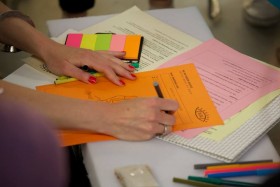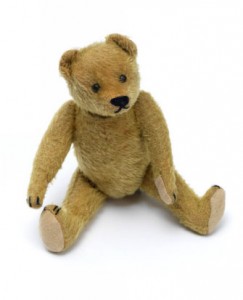The mid-term online strategy of the Jewish Museum Berlin

At a wearemuseum’s workshop in Warschau 2014 CC-BY-SA wearemuseums
At the moment, the conference “we are museums” is taking place in the rooms of our Academy. I have been working for days on my keynote lecture in which I take stock of recent developments at our museum. It is almost two years to the day since my colleagues and I first sat down together to discuss the web presence then in place and the cornerstones of its renewal. For while our online activities had been steadily expanding and diversifying, external assessment and target group evaluation revealed that visitors were finding it increasingly difficult to navigate our website. So it was evidently high time to → continue reading

Teddy bear that belonged to Ilse Jacobson (1920-2007), textile, straw, glass, ca. 1920 to 1930, in our online collection
56,250. This is the number that comes up when I search our collection’s database for its complete holdings. 56,250 data sets describing, for the most part, individual objects, and occasionally entire mixed lots. You can now see 6,300 of these objects online. Releasing this information to the public provokes mixed feelings on the part of museum staff: we have a lot to say about many of these objects. Many of them don’t speak for themselves. You can’t tell, for instance, that this teddy bear belonged to a child emigrating from Germany. The meaning of many documents and photographs lies likewise to a large extent in their biographical or political history. They require sufficient detail and well-chosen catchwords to help visitors find other objects related to the same topic.
With this project, we have to proceed pragmatically. 15-30 minutes of working time per object is a lot if you have to inventory a mixed lot with 250 units. We verify everything, including things that occur to us as we’re working. We are aware that there’s more to write about – and there would be more to correct, – if we had the time for more thorough research. Yet we can only make forays into the library or even into the archive for special projects or particularly important objects. And so we rely to a great extent on digital sources. → continue reading

